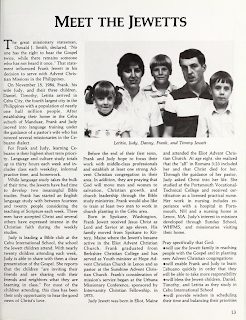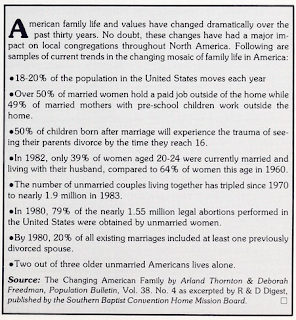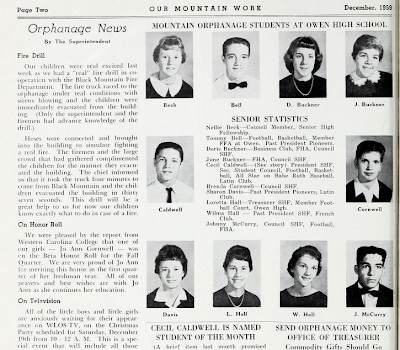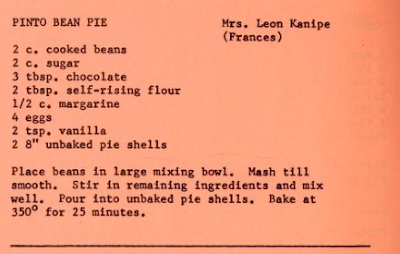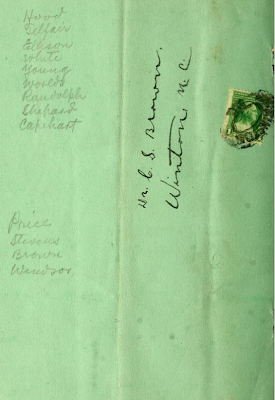The Religion in North Carolina Digital Collection seeks to bring together, preserve, and provide access to primary materials of religious bodies in North Carolina.
Tuesday, December 17, 2013
A Belated Happy Hanukkah from 1941
The newsletters, newspapers and serials in the Religion in North Carolina Digital Collection provide windows into how some North Carolinians viewed the events of the past.
As an example, consider December 1941. The surprise attack on Pearl Harbor and the resultant American entry into World War II overshadowed much of American life in that month.
Unsurprisingly, The American Jewish Times was no exception. The January 1942 issue contained articles about Jewish soldiers in the army, patriotic poetry and advertisements for war bonds.
But December 1941 also included the festival of Hanukkah, which the same January issue spotlighted with several articles on topics such as "The Significance of Chanukah" and "The Menorah, Symbol of a People". Nor were these topics unrelated, with a political cartoon symbolically equating the candles of Hanukkah with American freedoms.
In addition to these features, the January 1942 issue includes advertisements for local and national businesses, as well as articles on other topics of interest (see the index on this page).
To browse this issue, click on the link above or go to the 1940-42 volume of The American Jewish Times Outlook. To browse The American Jewish Times Outlook or other religious newspapers from North Carolina, visit the Newsletters, Newspapers and Serial Publications section of the NC Religion project at the Internet Archive.
Tuesday, November 26, 2013
Duke Publishes its 2,000th Volume
Today the Scribe machine at Duke University scanned the 2,000th volume since beginning production in October of 2012. The pamphlet, entitled The Life of Cleretta Nora Avery - the Wonderful Colored Girl Preacher, focuses on the life and family background of a 10-year-old prodigy who took the 19th century United States by storm with her oratorial skills. Written by her mother, Mrs. Victoria Georgie Avery (nee Andrews) and published in 1897, the pamphlet includes biographical information on her and Cleretta's father, Moses Brown Avery. While their daughter Cleretta is the focus, Mr. and Mrs. Avery didn't lead boring lives by any stretch of the imagination.
Originally from Pensacola, Florida, Moses grew up in Mobile, Alabama. He was brought there when he and his mother were freed from slavery by his white father, and was raised as an Episcopalian. He distinguished himself in his studies, and was one of the few African American officers in the Union Navy during the Civil War. Meanwhile, Victoria (also born in Pensacola, but to Latino and African American parents) knew Moses while growing up in Mobile. She survived the Civil War, and an attempt to sell her into slavery, by fleeing first to Texas and then alone on horseback into Mexico. When she returned to Mobile at the war's conclusion, she found Moses, who was involved in publishing and post-war administration in both Louisiana and Alabama. They married, and Cleretta was born around 1887. Moses was devoted to the African Methodist Episcopal (A.M.E.) Zion Church , and had been ordained therein as a minister at some point during his life. According to Mrs. Avery, Cleretta was converted at the tender age of 18 months. Intelligent and outspoken, at the age of 3 she declared her intention to follow in her father's footsteps and preach, and did give her first sermon in Raleigh several years later at the age of 6. Her mother writes:
It was certainly marvelous to behold the command of language, knowledge of the Bible and elocutionary powers exhibited by her in this first sermon, of one half hour long, delivered to a large congregation. That sermon made her famous. Invitations to preach from churches and from white and colored people in the adjoining cities and towns poured in upon this tiny little preacher. (p. 7-8)Cleretta Nora Avery and her mother went on an evangelical tour, continuing even after Moses' death in Aberdeen, N.C. in 1895. Cleretta preached in North and South Carolina at first, but expanded her range to include Virginia, New York, New Jersey, and Massachusetts, among other states. This pamphlet includes letters of commendation, praise, and admiration written to her by various preachers, including Rev. Dr. J.S. Caldwell of New York and Pastor J.H. Welch of Charleston. Despite this fame and ability to preach, Cleretta seems to have been a normal child in many other aspects, which is reflected in a charming newspaper interview where she discusses her dolls at length with a reporter.
Read this short but informative pamphlet on her early life in our collection on the Internet Archive. Readers should note that while this pamphlet is written by Mrs. Avery, it does include language used to describe persons of color, which while common in the late 19th century, is considered offensive today. This short biography is a valuable and fascinating work as it not only examines the rise and popularity of an educated, young woman of color at a time when it was uncommon for women of color to receive education (the first African American woman to receive a BA, North Carolinian Mary Jane Patterson, graduated from Oberlin College in 1862, a mere 30 years earlier), but it was written and published by another educated woman of color. Its language and the image it grants us of non-white, female life in a variety of southern states before, during, and following the Civil War gives us another piece we can add to the puzzle of what the lives of women of color were like at a time of racial, social, and economic upheaval in our country.
Sources:
Avery, V.G. The Life of Cleretta Nora Avery, the Wonderful Colored Girl Preacher. Carthage, N.C.: Record Job Print, 1897.
Bailey, Richard. Neither Carpetbaggers nor Scalawags: Black Officeholders during the Reconstruction of Alabama, 1867-1878. Montgomery, AL: NewSouth Books, 2010.
Friday, November 15, 2013
The family unit
The Advent Christian Witness, a serial digitized by the NC Religion Project, focuses partially on international ministry and world issues. Specifically, the publication emphasized missionary work and outreach into third-world countries. Articles in Witness advocate for active members who share their faith through dedicated evangelism.
If you are interested in the topics alluded to above, flip through one of the eleven volumes. There's a treasure trove of material there. But today I'd like to spotlight another, more localized subject within the material: the family.
In preparing the serial for digitization, I noticed the frequency of articles related to the family. Witness stresses the importance of nurturing the family and provides conversational pieces filled with advice on strengthening the unity of families and marriages.
Additionally, other articles discuss the perceived challenges of cultivating a Christian family. The serial recommends for devoted practice of prayer and bible study along with constant communication and affection. Spending time together and embracing traditions are also stressed. Witness contemplates family life, morality and modern day temptations. Topics of concern run the gamut from drugs and pornography to Christmas holiday advertising.
Keep on scrolling...!
Users might find it interesting to consider conceptions and portrayals of family within the serial as well as the anxieties and advice given. Witness appreciates traditional models and comments on the changing shape of the American family. The publication reveres the bonds between married couples and families, and is dispirited by the increase in divorces, single-parent households and other trends in American life as outlined in the snippet below:
As I mentioned before, the NC Religion Project digitized eleven volumes of the serial, which are available on the Internet Archive. This post features excerpts from the first five volumes. This is a photo-heavy post, but there were so many interesting bits to extract and plenty that got left out. See for yourself!
Friday, September 27, 2013
"Brunswick Stew p. 28"
Marginalia can tell us many things about the previous owners of a volume. In some cases, such as this note in the cookbook A Collection of Favorite Recipes, they can even tell us about the owners' favorite foods.
This note was handwritten on the cover, providing a quick reminder for where to find the Brunswick Stew recipe. Turning to page 28, we find that:
Mrs. H. H. Moore's Brunswick Stew recipe (not to be confused with Mrs. L. D. Moore's Brunswick Stew recipe right below it) is marked with an asterisk, which may correspond to the note on the front page.
A Collection of Favorite Recipes was compiled by the Women's Society of Christian Service at Hayes Barton Methodist Church in Raleigh. Created to raise funds for equipping a new kitchen, the cookbook contains recipes submitted by the parishioners. Feel free to flip through this item and look for recipes such as "Coffee Punch," "Old Virginia Spoon Bread," "Frankfurter Casserole," "Chicken Wiggle" or "Spanish Eggplant," as well as a wide variety of interesting local ads. Or head on over to the NC Religion collection on the Internet Archive, and check out our other cookbooks and items related to religious life and culture in North Carolina.
Monday, August 19, 2013
NC Religion goes to NOLA!
Just a few friendly acronyms for your Monday morning...
This past week, I ventured to annual meeting of SAA, Society of American Archivists, which was held in New Orleans this year. The meeting was jointly sponsored by CoSA, Council of State Archivists. Thankfully, the weather was kind and not too humid for August in the fascinating, but often steamy and sticky, city of New Orleans.
I presented a poster entitled "Spreading the Faith: An Analysis of Social Media and the NC Religion Digitization Project" during the graduate student poster sessions. This was another wonderful opportunity to inform people and professionals of the project.
If you haven't already, check out the Internet Archive collection, our Facebook page and our Google+ page. There is primary material for those conducting research and neat information for those interested in casual browsing. Should you need a little inspiration, here are a couple of my favorite items! As always, we'd love to hear from you, be it in the form of comments, questions or suggestions by way of social media or e-mail.
Wednesday, June 26, 2013
NC Religion at The American Theological Library Association
The Duke Divinity School Library Staff attended the American Theological Library Association Annual Conference in The Queen City of Charlotte, North Carolina last week. Project Coordinator, Shanee Murrain presented a poster "The Religion in North Carolina Digital Collection: Content, Audience, and Presentation. The presentation featured background about the project planning grant, scope and audience, organizing content and workflow, copyright analysis, incidences of impact, digital output and Black Church identity politics as reflected in meeting minutes and church histories. Everyone wanted to know about the grant! Fellow librarians shared their interest and excitement about the digital collection. A few even asked Shanee to consult on their archival programs.
 |
| They are all so engaged! |
Monday, June 17, 2013
NC Religion Project Stats
This first year of digitizing materials is winding to a close. So here are a few statistics from the project.
As of June 13, 2013, there are 2,180 items online at the Religion in North Carolina Internet Archive Collection.
As of June 2, 2013, the download stats by month:
866 downloads in October 2012
1,319 downloads in November 2012
2,867 downloads in December 2012
6,065 downloads in January 2013
4,799 downloads in February 2013
9,902 downloads in March 2013
7,705 downloads in April 2013
10,822 downloads in May 2013
As of June 13, 2013, Duke has 305,933 pages online and UNC-Chapel Hill has 146,235 pages online and 287 foldouts online.
We are excited to continue scanning and sharing these materials! And we are glad to see that people are using the digitized items. If you are interested in the collection, but haven't yet seen it for yourself, navigate over to our page on Internet Archive.
Thursday, May 9, 2013
Religion Around the State
Although the NC Religion project strives to provide a substantive body of religious materials virtually through the Internet Archive, here are a few links to organizations around the state of North Carolina with religious materials that might be of interest to researchers. This is, of course, by no means a comprehensive and authoritative inventory. If there are other organizations like archives, historical societies, museums, libraries and so forth that hold items relevant to religion in North Carolina, let us know in the comments below. We would be happy to add them to the post, which can serve as a running list instead. In no particular order:
Moravian Church Archives located in Winston-Salem. According to their website, the archive hosts over a million pages of handwritten documents including industrial, commercial, civic, ecclesiastical, educational, medical and musical-related records in addition to diaries, correspondence, ethnographic materials, prints, broadsides, photographs and maps. The archive also has a library with 1,600 titles primarily from the 18th century.
Southeastern Jurisdiction of the United Methodist Church in Lake Junaluska features a museum along with records of the Southeastern Jurisdiction, journals and newspapers covering the SEJ Annual Conference, local church histories, biographical information on clergy and a variety of relevant books.
North Carolina Conference of The United Methodist Church in Garner provides records on the Annual Conference, information for local church historians and a digital archive.
The Levine-Sklut Judaic Library and Resource Center in Charlotte is connected to the Jewish Historical Society of Greater Charlotte. The library and resource center hold "photographs, letters, brochures, scrapbooks" and other print materials that represent Jewish life and community in and around Charlotte.
Jewish Heritage Foundation of North Carolina in Durham unifies projects covering Jewish history throughout North Carolina. The site presents a network of statewide resources for those interested in Jewish heritage.
Friends Historical Collection in Greensboro is a collection from the Hege Library at Guilford College. Guilford was founded by Religious Society of Friends in 1837. This collection houses records on the North Carolina Yearly meetings, monthly meetings and other important meetings in the region. Additionally, the collection acts as the main archive for the Quaker House of Fayetteville and the North Carolina Friends Historical Society. The library possesses manuscripts from Quaker individuals and families.
Church History Collection in Elon at the Belk Special Collections Library at Elon University offers items connected to the Christian Church. Records range from church histories to meeting minutes to audio-visual materials to church periodicals.
Presbyterian Collection and Theological Seminary Collection in Charlotte at Johnson C. Smith University. The Presbyterian Collection includes records, such as church bulletins, correspondence, church histories and information concerning the Catawba Synod that demonstrate ties between the University and local Presbyterian churches. The Theological Seminary Collection is comprised of records on the University's Seminary from the early 1900s to 1969. In 1969 the seminary relocated to Atlanta. The records consist of newsletters, annual reports and administrative correspondence.
Thursday, May 2, 2013
Top Five NC Religion Items
Since we have been adding digitized materials to the Internet Archive for several months now, let's take a look at our all-time most downloaded items...
1. Presbyterian Orphans' Home at Barium Springs, North Carolina: an album of memories with 386 downloads
2. Annual of the...annual session of the Baptist State Convention of North Carolina (Volume 127th 129th (1957-1959) c. 1) with 356 downloads
3. Annual of the...annual session of the Baptist State Convention of the North Carolina (Volume 138th (1968) c. 1) with 324 downloads
4. Rock Spring Campground (Volume v. 2) with 249 downloads
5. Annual of the...annual session of the Baptist State Convention of North Carolina (Volume 88th 91st (1918-1921) c.1) with 209 downloads
These are only the top five items, and they may shift as more materials are added to the Internet Archive. If you're curious to see more of the most accessed titles, check out the home page and click on the more option for a full listing.
Last week, Presbyterian Orphan Home was still the most downloaded item with 25 downloads and Baptist State Convention (1968) was the 5th most downloaded item with 17 downloads. Other popular items included:
2. Journal of the Western N.C. Annual Conference of the Methodist Episcopal Conference of the Methodist Episcopal Church, South [serial] (Volume 44th 47th (1933-1936)) with 21 downloads
3. Methodist Protestant Herald, 1935 with 19 downloads
4. Journal of the Western N.C. Annual Conference of the Methodist Episcopal Church, South (Volume 1953-1955) with 17 downloads
Currently, we have a total of 2,106 items ready and waiting to be downloaded. If you happen to stop by this blog, we would love to hear what materials you have (or hope to!) looked at and/or downloaded, what you are planning to use the materials for and what types of materials interest you the most.
Happy downloading!
Monday, April 22, 2013
Carolina Baptist News and the Problem of Margins
Here is one more quick item spotlight. We digitized this material a few months back but I had forgotten to share it on the blog until now. The item in question is a serial in four volumes called Carolina Baptist News. This serial was particularly memorable because it used colorful paper and images and had many neat ads and foldout pages bound in with the newsletters. One of the project members remarked on the homegrown quality of serial. It is mind-boggling to think of how quickly publication layouts and conventions have changed thanks to computers. Above is volume one of four (go check out all four on the Internet Archive!). Here is a link to the March/April 2013 Carolina Baptist News. You can find several recent back issues on their site if you are interested.
You might notice that the margins on this serial are a bit wonky in places. To digitize materials, we need around a 1/4 inch space in the margins so that everything comes out clearly. However, sometimes that is a struggle with certain materials for a variety of reasons. We do our best to solve these problems, but if nothing can be done we tend to err on side of digitization regardless. Although some text can be lost, we want to share as much information as possible. Generally, even if a little bit is missing, items can still be read. More than anything our aim is for access. Anyway, that's just one of the possible snags in selecting and preparing items for digitization. The creators had no way of knowing how their products would be used in the future so they did not care how close their text was to the margins. Ideas like that can get you wondering how a few generations down the road people might be manipulating our documents in an entirely different fashion. But that's an endless what-if game.
Friday, April 12, 2013
The Religion in NC Collection in Motion!
 | |||||
| Project team heading to Wake Forest University to pick up the next batch of materials to be digitized. |
Wednesday, April 3, 2013
Our mountain work
I'd like to spotlight a serial, Our mountain work, from the UNC branch that went live on the Internet Archive recently. There are twelve volumes available. The first volume dates around the 1910s but the bulk of the serial, volumes two through twelve, cover the mid-1940s to the late 1980s.
As I prepared this serial I found myself admittedly distracted by the content. My part with the NC Religion project asks me to pull and examine items for any conservation issues that might delay digitization. According to my job description, I'm more concerned (or should be) with the physical context of the item rather than the intellectual content. But sometimes when neat material comes along, I can't help but let my eyes wander...
For anyone with an interest in Asheville, Presbyterianism, orphanages, children, education and outreach, Our mountain work would be a great serial to consult. Or, if you're just plain curious then click on over to the publication on Internet Archive. And skim through these other neat serials while you're at it!
Friday, March 15, 2013
Tuesday, February 26, 2013
Religion in Real Time
Here's a little bit of religion in North Carolina in real time! This Saturday, March 2nd, St. Paul African Methodist Episcopal Church in Chapel Hill, NC is holding a 5K Walk and Run to benefit their current project, St. Paul Village.
According to the St. Paul site, the new endeavor, which will be constructed over time in phases, will offer a "worship sanctuary and fellowship hall; mixed-use senior and affordable housing; childcare, youth, and senior centers; recreational facilities; a wellness center, a health clinic; a historical museum; and a memorial garden." Quite an ambitious undertaking! St. Paul AME Church was established in 1864 and the church was built in 1892. (Their site provides an in-depth history.) The Village project will reassert the Church as a community anchor and will, on a practical level, provide more space for the expanding congregation.
The Church envisions that the Village should be a "multi-use and multi-generational" space. Fittingly, the project, centered around community, will be stand on land that was a historically African-American neighborhood dating all the way back to the mid-1800s. In the spirit of charity, St. Paul intends to donate 10% of its proceeds from the walk/run to other local organizations.
If you're interested in the walk/run or the St. Paul Village project, then navigate over to the site for more details and blueprints.
NC Religion has some texts up concerning African American Episcopalians, Methodists, Baptists and more. You can search for yourself under the main subject keyword listings in the Religion in North Carolina section on the Internet Archive.
Thursday, January 31, 2013
A Slice of the Sub-Collection Pie
Since we’ve hit and exceed 1,000 items with the project, I
thought it might be interesting to break down sub-collections to see what
percentages of materials are currently represented within the project. This is a transitory analysis. A few months from now the numbers will be different and the
percentages might be altered. But it could be interesting reflect on past project progress. The sub-collections are Church and Religious Body Histories (Histories); Clergy Autobiographical and Biographical Materials: Journals, Testimonies, etc. (Clergy Biographical); Ephemerals: Cookbooks, Event Programs, and Directories (Ephemerals); Meetings, Proceedings, and Conference Reports (Meetings); Newsletters, Newspapers, and Conference Reports (Newsletters); Sermons of North Carolina (Sermons).
Here's a pie chart of the sub-collection stats:
Clearly at the moment we are dominated by the Meetings and in a not too distant second are the Histories. Lately, we've been eyeing serials more and more to bolster our numbers in Newsletters and balance things out. Although, it's important to note here that we can only assign an item to one sub-collection. So it is a possibility that the cheerful pie chart above cannot totally document the overlap in items that might toe the boundaries between two (or maybe even more) categories. When it comes to classification, things are rarely cut and dry.
But speaking of pie, check out this handful of exotic recipes below. They make up part of the 8% of the Ephemerals sub-collection.
Pinto Bean Pie from The grange range cookbook (1975). Since this recipe has chocolate, it just may work.
Squash Pie from Country cookbook (1984) sounds a little riskier though...
Fluffy Frozen Peanut Pie from Keys to the Kitchen (1981).
And on the top of the next page, Frozen Rum Cream Pie.
This cookbook is worth exploring. On page 268 is a recipe for Cracker-Nut Pie and on page 278 is a recipe for Green Tomato Pie.
The Gertrude Bobbit Circle cook book (1948) has a curious variety of pie as well. This page alone has recipes for old-fashioned favorites like Transparent, Jeff Davis, Vinegar, Jelly and Pineapple pie.
Between the boundaries of the NC Religion sub-collections are several neat materials - and pies too.
Tuesday, January 29, 2013
One Thousand...and Seven!
NC Religion has started the New Year off with a bang! As of yesterday, Monday, January 28th, there are 1,007 items loaded into the Internet Archive and ready for skimming. The best way to celebrate? Head on over to our collection and start browsing through the items. We've got a thousand and seven ways to get your research started. And we're not planning on slowing down our digitization progress any time soon. If you have something specific in mind that isn't on our site and fits the parameters of our collection, consider nominating a resource and we will do our best to look into your inquiry and see if it can or cannot be added to the NC Religion project for digitization.
Tuesday, January 15, 2013
Stamps, Chicken Scratch & Other Oddities
Marginalia can be distracting when flipping through an item. Not to mention downright annoying when the previous owner or owners have written over or crossed out original text. In some cases those notes can indicate corrections. Still, when I flip to a page covered in chicken scratch, I can't help but cringe at first. After the initial gut reaction wears away, it's interesting to examine messy traces people have left behind. These secondary additions - notes, stamps, extra pages adhered, creased pages or folded booklets, etc.. - offer an elliptical insight into an item's life.
Some of the Duke crew noticed a collection of minutes that featured stamps. These stamps spotlight the typical batch of founding fathers (plus former President Harding) looking quite stately. I'm not exactly an avid stamp collector so I can't comment on the nitty-gritty details myself, but whether you're a stamp aficionado or just plain curious like me then check out these links so you can see the items too:
Aside from marginalia and other decorative additions, I've come across a number of quirky books like this one here:
This book, Sketches of pioneer Baptist preachers in North Carolina, has some very inventive handiwork. From the looks of it, the creator cut the text from one source and adhered it on top of another preexisting book. And someone even added penciled-in page numbers that correspond to the new text! Based on some of the visible words, the original text appears to focus on science.
We'd love to hear about any neat and unusual details you discover in the NC Religion materials!
Subscribe to:
Posts (Atom)






